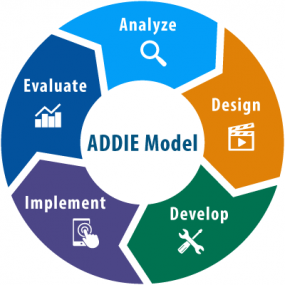7.Process of Training and Development
Training and development are crucial components of Human Resource Management (HRM), aimed at enhancing the skills, knowledge, and abilities of employees. They contribute to employee growth, increased job satisfaction, and overall organizational success.
Below are the process of effective process of training and development.

- Needs Assessment-Conduct a thorough analysis of organizational goals and employee skills to identify training needs,Use methods such as surveys, interviews, and performance appraisals to identify skill gaps.
- Design and Development-Design training programs based on identified needs and learning objectives,Develop training materials, resources, and activities.
- Delivery of Training-Implement training using various methods like workshops, e-learning, simulations, and on-the-job training,Ensure trainers are knowledgeable and skilled in the subject matter..
- Evaluation of Training-Measure training effectiveness using methods like pre- and post-training assessments, participant feedback, and supervisor evaluations,Evaluate whether learning objectives were met.
- Transfer of Learning-Reinforce learning through follow-up activities and opportunities for practice,Provide support and resources for participants to apply new skills on the job.
- Feedback and Continuous Improvement-Gather feedback from participants, trainers, and supervisors to improve future training programs,Make necessary adjustments based on feedback and changing organizational needs.
- Long-term Development-Implement career development plans, coaching, and mentoring to support ongoing growth and skill enhancement.
- Measuring ROI-Evaluate the return on investment by comparing training costs to benefits, such as increased productivity and reduced turnover.
References
Noe, R. A. (2017). Employee Training and Development. McGraw-Hill Education.
Phillips, J. J., & Phillips, P. (2002). ROI Basics: The Benchmarking Book. Elsevier.
London, M., & Mone, E. M. (Eds.). (1999). Career Development: A Human Resource Development Perspective. Psychology Press.
Broad, M. L., & Newstrom, J. W. (1992). Transfer of Training: Action-packed Strategies to Ensure High Payoff from Training Investments. Perseus Books.
Kirkpatrick, D. L., & Kirkpatrick, J. D. (2006). Evaluating Training Programs: The Four Levels. Berrett-Koehler Publishers.
Bojamma, S. (2023, July 22). Training & development process in HRM. Pyjamahr.com. https://pyjamahr.com/training-development-process-in-hrm/?utm_source=blog
It's great to see a step-by-step approach to creating impactful training programs, which is beneficial for both HR professionals and organizations.
ReplyDeleteOne improvement suggestion would be to breaking down the evaluation methods further could be helpful. For instance, explaining how to conduct pre- and post-training assessments in more detail or providing tips on gathering feedback effectively could enhance the blog's practicality.
Incorporating real-life examples and diving deeper into evaluation techniques could make it even more informative and actionable. Well done!
Thank you for your perceptive comment. Your suggestion to elaborate on evaluation methods, especially pre- and post-assessments and feedback collection, is insightful. Adding real examples and detailed evaluation techniques would indeed enhance its practicality. Your feedback is valued. Much appreciated!
ReplyDeleteYour article provides a well-structured overview of the training and development process. You've produced a clear road map for delivering successful training and development projects by decomposing each stage and outlining its importance. For HR professionals and businesses aiming to improve employee skills and contribute to overall success, this article is an invaluable resource. You did a great job of showing a thorough procedure!
ReplyDeleteThank you for your thoughtful feedback. I'm pleased the article's structure and roadmap for training and development were valuable. Your recognition of its significance for HR professionals and businesses is appreciated. Your acknowledgment of the thorough procedure is encouraging.
Delete